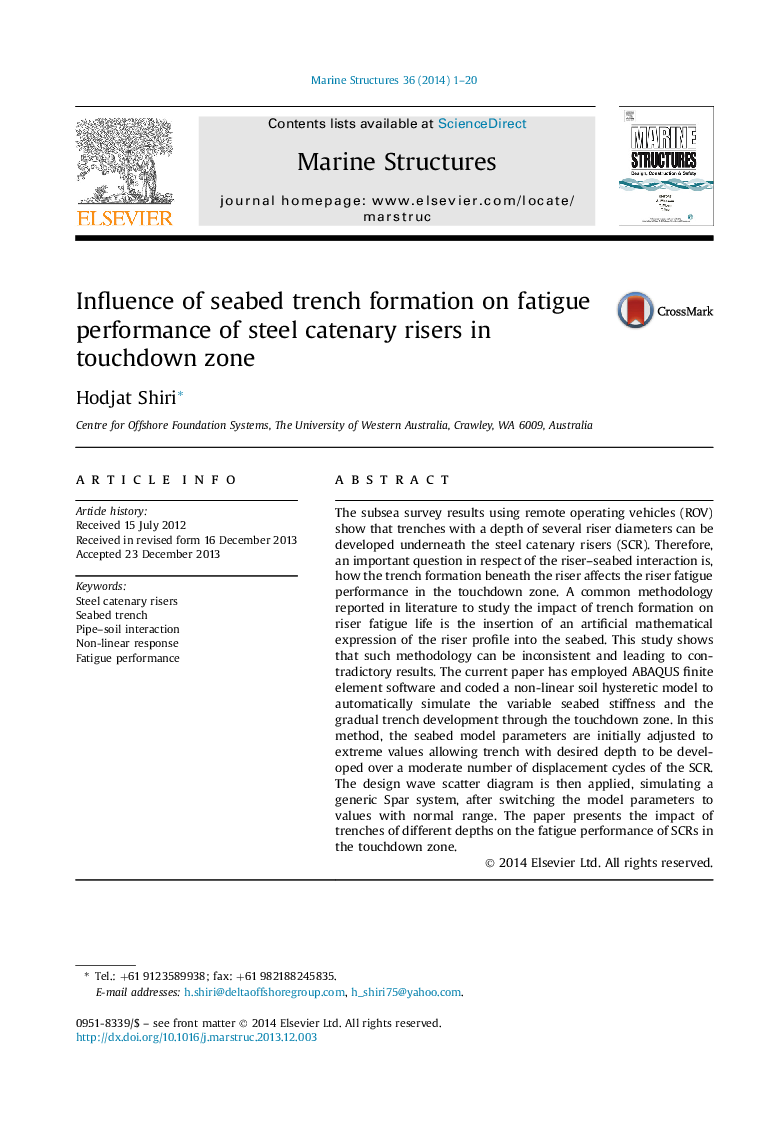| Article ID | Journal | Published Year | Pages | File Type |
|---|---|---|---|---|
| 294243 | Marine Structures | 2014 | 20 Pages |
•Trench formation beneath the SCRs has been proved through ROV surveys.•An important question is how this trench affects the fatigue performance in TDZ.•Insertion of analytical trench in TDZ was found to be an inconsistent method to study the issue.•A non-linear seabed interaction model with particular capabilities was used to explore the subject.•The peak fatigue damage is increased with deeper trenches while the riser dynamics positively contributes to fatigue life.
The subsea survey results using remote operating vehicles (ROV) show that trenches with a depth of several riser diameters can be developed underneath the steel catenary risers (SCR). Therefore, an important question in respect of the riser–seabed interaction is, how the trench formation beneath the riser affects the riser fatigue performance in the touchdown zone. A common methodology reported in literature to study the impact of trench formation on riser fatigue life is the insertion of an artificial mathematical expression of the riser profile into the seabed. This study shows that such methodology can be inconsistent and leading to contradictory results. The current paper has employed ABAQUS finite element software and coded a non-linear soil hysteretic model to automatically simulate the variable seabed stiffness and the gradual trench development through the touchdown zone. In this method, the seabed model parameters are initially adjusted to extreme values allowing trench with desired depth to be developed over a moderate number of displacement cycles of the SCR. The design wave scatter diagram is then applied, simulating a generic Spar system, after switching the model parameters to values with normal range. The paper presents the impact of trenches of different depths on the fatigue performance of SCRs in the touchdown zone.
